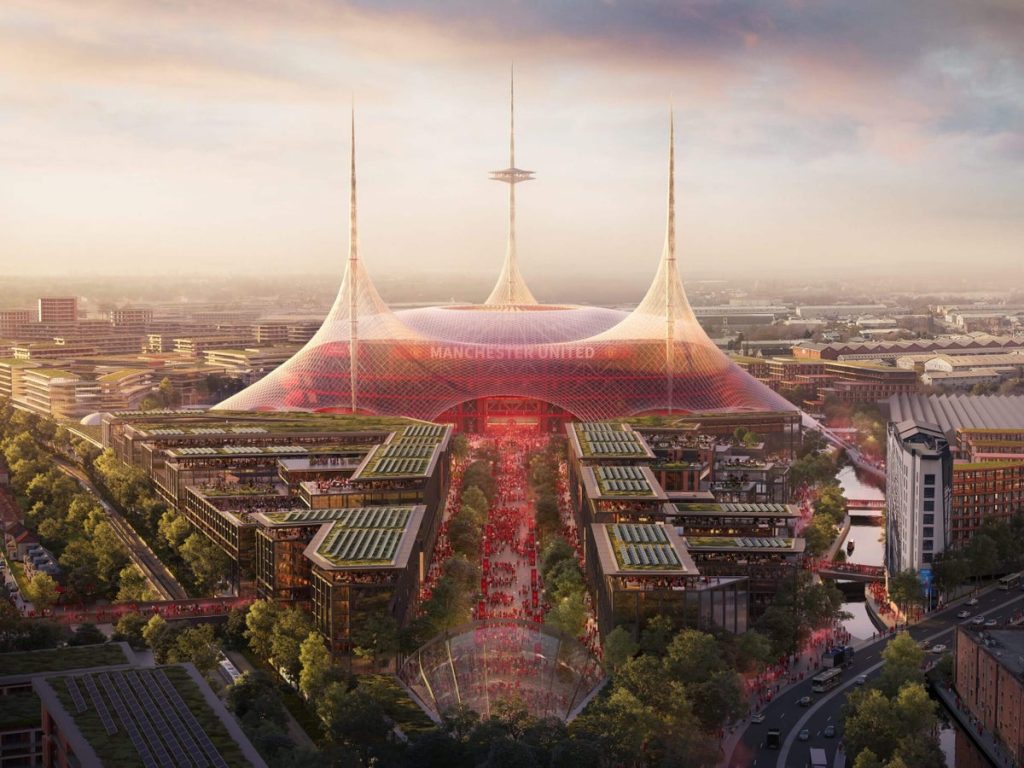Manchester United has announced plans to construct a new 100,000-capacity stadium instead of renovating their current Old Trafford venue. The project was revealed on Tuesday, with Fosters + Partners, a London-based architecture firm, chosen to lead the initiative.
The new stadium will be built on the land surrounding Old Trafford as part of a larger regeneration of the Trafford Wharfside area. The club believes that this development could bring in an additional £7.3 billion ($9.7 billion) to the local economy, create 92,000 job opportunities, construct more than 17,000 new homes, and attract an additional 1.8 million visitors annually.
A task force dedicated to the Old Trafford regeneration project presented its final report at a meeting on Friday. Digital renders of the new stadium and its surroundings were unveiled, featuring a three-pronged stadium canopy inspired by the Red Devils trident from the club’s badge.
While a redeveloped Old Trafford could hold up to 87,000 spectators, the new build has the capacity for 100,000 fans. A survey conducted amongst United supporters last year revealed that 52% preferred a new stadium, while 31% favored redevelopment.
The club’s co-owner, Sir Jim Ratcliffe, expressed excitement over the project, calling it a transformative venture that will rejuvenate the Old Trafford area.
United plans to use a modular build approach to expedite the construction process, targeting a five-year timeline rather than a decade. The club continues to seek funding for the estimated £2 billion cost of the new stadium.
Analysis by club correspondent Laurie Whitwell highlights the importance of financing the project and retaining the essence of the current stadium. While a naming-rights deal could provide significant revenue, careful consideration must be given to ticket prices and maintaining fan involvement.
Senior football news reporter Matt Slater emphasizes the potential benefits of naming-rights deals for funding the stadium and offsetting construction costs. While concerns exist around preserving the history and atmosphere of Old Trafford, supporters may eventually embrace a new stadium and its associated sponsor.
Ultimately, the new stadium represents a major investment for Manchester United, aiming to create a modern, state-of-the-art facility that will shape the future of the club and its community.

